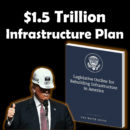U.S. Construction Situation Report
To say the American construction industry is booming is an understatement. So far this decade, the U.S. Construction supersector’s 3.3% annual employment growth is the fastest growing supersector of all ten industry supersectors. Moreover, each of this supersector’s sectors and subsectors (Construction of Buildings, Specialty Trade Contractors, and Heavy and Civil Engineering Construction) exceeded the annual rate of U.S. GDP growth by substantial margins—the only supersector to do so. Construction industry’s wages for production and nonsupervisory workers are now the fourth highest in the ten supersectors. Employment in Heavy and Civil Engineering is at an all-time high and has a bright future considering a plethora of potential national infrastructure projects. Nonresidential construction is approaching peak employment and is likely to grow as more and more investors commit their financial resources to new commercial enterprises. While residential construction is still 18% below peak employment, new home starts and sales doubled in number from their post-recession lows.
Conversely, the U.S. Construction supersector is facing significant challenges. Nine out of ten construction companies report skilled labor shortages. 99 out the top 100 U.S. metropolitan areas experienced significant housing price increases of up to 130% since the end of the Great Recession. As of July 2018, the average sales price of a new home sold in the United States was $394,300, which is pricing many potential homebuyers, especially Millennials, out of the housing market. 70% of non-home owning Millennials, the largest living generation, feel it will be difficult for them to get a mortgage. According to the Federal Reserve, the Federal Funds Rate may rise to 3.5% by 2020, making home mortgages and commercial real estate loans more unaffordable. President Trump’s $1.5 billion infrastructure plan and the 40 planned or in-progress U.S. infrastructure projects of “major economic significance” for the nation and the Heavy and Civil Engineering Construction industry are all stalled by a deeply divided Congress.
From a Jobenomics standpoint, the future of the U.S. Construction supersector should be bright if the U.S economy continues to grow at robust rates, and if the challenges facing this important Goods-Producing industry can be mitigated.
Download, at no cost, the complete 15-page Jobenomics U.S. Construction Situation Report by clicking on this link or reviewing numerous similar reports and e-books in the Jobenomics Library.
To spur your interest, these are a few of the charts and tables in this report.



















